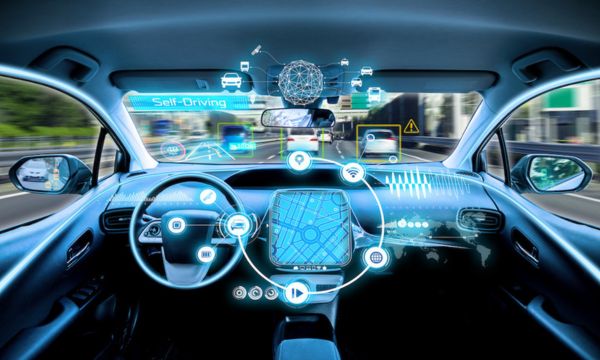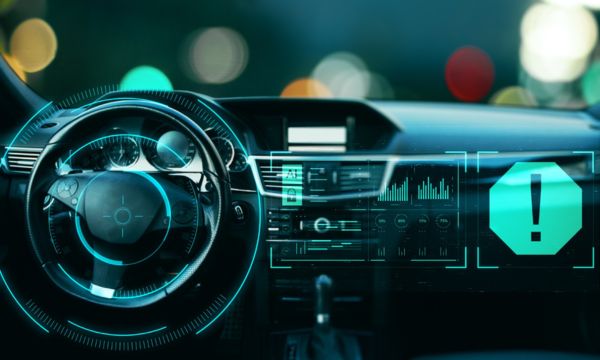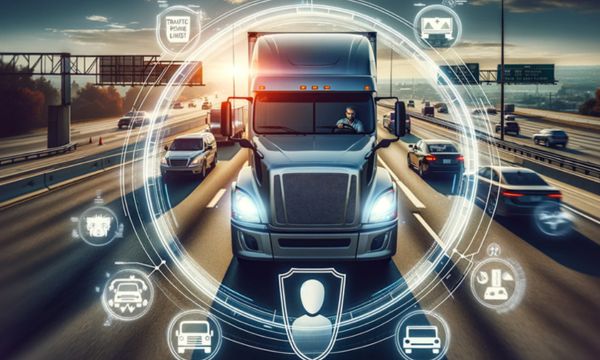Enhancing Safety: AI-Driven Collision Avoidance
As technology continues to change, artificial intelligence (AI) is becoming increasingly important in many areas.
One very important area where AI is making significant progress is improving safety, especially in the area of collision avoidance.
This article discusses many different aspects of AI-powered collision avoidance systems, including their importance, the problems, and the ways they can help reduce accidents in many different areas.
These systems use advanced algorithms to analyze the environment in real time, identify potential hazards and make quick decisions to avoid collisions.
1. Understanding the Need for Collision Avoidance:
- More transportation problems: As more people move to cities, traffic and transportation systems become more complex. Road, air, and water traffic all increase the risk of accidents. Traditional collision avoidance methods are often impulsive and may not be enough to solve the growing problem.
- Human flaws and errors: While drivers and managers are smart and skilled, they are not perfect. When you are tired, distracted, or making decisions quickly, errors can occur that can lead to crashes. The goal of AI-powered collision prevention is to augment human capabilities and make things safer by taking proactive steps.
2. The Role of Artificial Intelligence in Collision Avoidance:
- Perception and observation: Advanced sensors such as radar, lidar, cameras, and other new technologies can help AI-powered accident avoidance systems understand their surroundings. Machine learning algorithms process large amounts of data in real-time, allowing the system to understand the environment, spot potential hazards, and guess where they will go.
- Make choices and have freedom: An important part of collision avoidance is the AI system’s ability to see complex situations and make quick choices. For example, self-driving cars use artificial intelligence to navigate traffic, change speed and avoid collisions, reducing the chance of a crash.
- Always learn and adapt: One of the best things about AI collision prevention is that it is constantly learning. As machine learning systems collect more data and handle more situations, they get better over time. This flexibility allows collision avoidance systems to work better in a wider range of environments and situations.
3. How to Use AI-powered Collision Avoidance:
- Automotive industry: In the automotive industry, AI-powered collision prevention is now standard on all new cars. Automatic emergency braking, lane-keeping assistance, adaptive cruise control, and other features all use artificial intelligence algorithms to make driving safer. The development of fully self-driving cars shows how important artificial intelligence is in preventing car accidents.
- Air travel: The aviation industry has adopted AI-powered collision avoidance technology to improve air traffic management and reduce the chance of mid-air collisions. Aircraft collision avoidance systems use artificial intelligence to process data from radar and other sensors. This provides pilots with real-time information and suggests the best route to avoid a possible collision.
- Maritime navigation: Artificial intelligence is a very important part of maritime guidance, as it helps prevent collisions between ships. The ship’s AI-powered collision avoidance system looks at data from radar, sonar, and other sensors to spot other ships nearby, guess where they are going, and recommend course changes to avoid an accident.
4. Challenges and Considerations:
- Legal and ethical implications: As AI systems gain more autonomy to make choices, concerns arise about ethical and legal responsibility. Determining the responsible party for an accident involving an artificial intelligence control system is a difficult problem that requires strict rules and ethical standards.
- Interoperability and Standardization: Interoperability and standardization across different companies and transportation modes are critical to the operation of AI-driven collision avoidance systems. By establishing standard frameworks and protocols, different AI systems can easily work together and talk to each other, which will promote a unified approach to security.
- Network Security Risks: When we rely on artificial intelligence, new security concerns arise. If someone were to hack or tamper with an AI-powered accident prevention system, terrible things could happen. To close these security gaps, you need strong cybersecurity measures and constant monitoring to ensure you are protected from potential threats.
5. Hope for the Future:
- How it works with smart infrastructure: Combining artificial intelligence systems with smart infrastructure is key to preventing collisions in the future. When AI-powered vehicles and intelligent traffic management systems work together, they can improve communications, keep traffic flowing more smoothly, and further reduce the risk of accidents.
- Artificial intelligence responds to emergencies: AI-powered collision prevention could be used in systems that help people in emergencies. Adding artificial intelligence to emergency vehicles can speed up response, find optimal routes, and improve teamwork in dangerous situations, saving lives and limiting damage to other areas.
Conclusion
Autonomous collision avoidance systems are at the heart of new technologies aimed at making traffic safer in many areas.
Artificial intelligence can help us perceive things, make decisions, and continuously learn. By using these skills, we may be able to significantly reduce the number of car accidents and save many lives.
However, to get the most out of this breakthrough technology, we need to address issues such as ethics, standardization, and cybersecurity risks.
As we move towards a future where artificial intelligence becomes increasingly important to prevent accidents, intelligent integration and responsible development will be needed to ensure safer and smoother traffic.
FAQs
1. What is AI-powered collision avoidance?
AI-powered collision avoidance technology uses artificial intelligence (AI) technology to detect, analyze, and avoid collisions in the aviation, navigation, and automotive sectors.
2. Why do we need artificial intelligence to avoid collisions?
Traffic and transport are becoming increasingly complex, people make mistakes and are limited.
This means using artificial intelligence to prevent accidents and thus improve safety.
3. How can artificial intelligence help prevent car accidents?
Artificial intelligence helps prevent collisions by using advanced sensing and sensing technologies, real-time decision-making, and continuous learning.
Machine learning systems use data from many sensors to understand what is happening in the world, spot potential dangers, and take steps to protect people from them.
4. In what ways can AI-powered collision prevention be used?
AI-powered collision avoidance can be used in transportation operations, aviation, and maritime navigation. It is used in ship anti-collision systems, air traffic control systems, and automatic emergency braking systems in cars.
5. What problems does AI-driven collision avoidance solve?
Ethical and legal issues, the need for cross-industry standards and interoperability, and cybersecurity risks are some of the issues that need to be addressed.
Key challenges include identifying those responsible for AI-related incidents, ensuring smooth mergers, and protecting against cyber threats.
6. How can AI-based collision prevention be added to smart infrastructure?
In the future, smart infrastructure and AI-powered collision prevention will be used together. When AI systems and intelligent traffic management work together, they can improve communication, keep traffic flowing more smoothly, and further reduce the risk of accidents.
 Understanding AI in Autonomous Vehicles
Understanding AI in Autonomous Vehicles
Self-driving cars, also known as self-driving cars, are a major technological advancement that relies heavily on artificial […]
More Revolutionizing Driving: AI Integration in Cars
Revolutionizing Driving: AI Integration in Cars
The automotive industry is undergoing a major transformation as artificial intelligence (AI) is applied to cars. As […]
More AI-Based Driver Monitoring Improves Road Safety and Performance
AI-Based Driver Monitoring Improves Road Safety and Performance
The automotive industry has undergone dramatic changes in recent years as artificial intelligence (AI) has been built […]
More